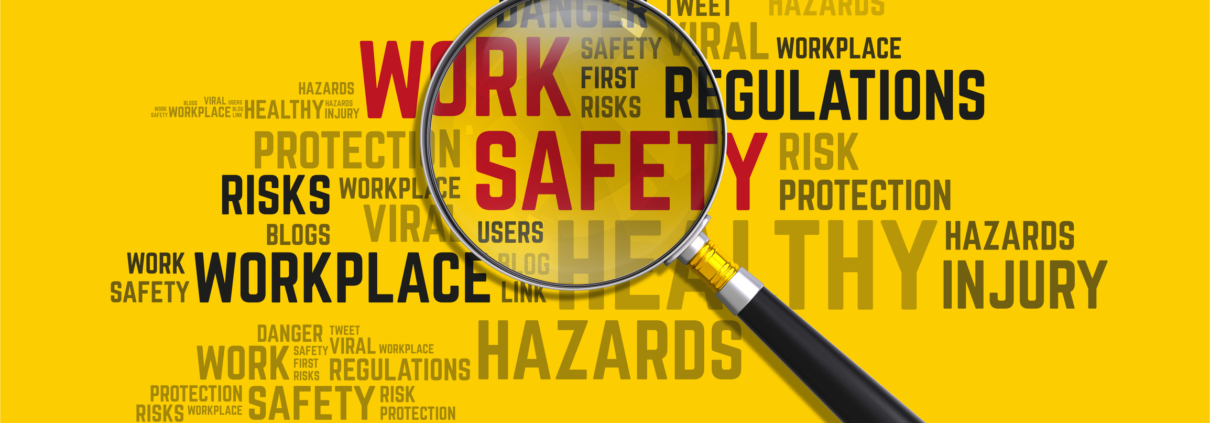State OSHA Requirements You Need To Keep In Mind
When we think about workplace safety, we usually think about the Occupational Safety and Health Administration (OSHA) regulations that exist to protect workers. However, did you know that each state can have its own unique OSHA standards on top of the federal ones? If you’re not careful, you could be non-compliant in one state while following all regulations in another. Here’s what you need to know about to avoid being caught off guard.
North Carolina
In North Carolina, firms employing more than 11 workers and with an experience rate modifier of 1.5 or above are mandated to have an employee safety and health committee on their premises. This requirement, outlined in 13 NCAC 07A .0601 (b), is specific to North Carolina; interestingly, there are no requirements for workplace safety committees in Federal OSHA.
Kentucky
Kentucky employees engaged in residential construction activities need to stay protected by safety net systems, personal fall arrest systems, guardrail systems, or any other measure provided in that section when working ten (10) or more feet above a lower level near unprotected sides and edges, leading edges, on formwork and reinforcing steel, a hoist area, or working on roof slopes three (3) in twelve (12) or less.
Washington
In Washington, any four (4) feet excavation or deeper requires a protective system such as shoring, trench box, sloping, or benching. It’s important to highlight that the threshold for this requirement in the Federal OSHA excavation safety rule (as well as most other state regulations) is at five (5) feet.
Utah
To ensure employee safety, Utah mandates the use of approved safety harnesses that are securely tied above the material level before entering any storage that contains any material that could run or cave. Federal OSHA doesn’t have a standard for this specific situation (but they do have a general confined space entry standard).
Arizona
In Arizona, employers must comply with ADOSH regulations concerning the use of Polyvinyl Chloride (PVC) piping. Unlike federal OSHA, Arizona prohibits the use of PVC for above-ground installations, specifically for transportation or distribution of compressed air or gasses.
California
California’s Cal-OSHA regulations have an interesting requirement for their steel erection standard. While Federal OSHA regulations demand connectors to use a fall-arrest system when exposed to falls higher than two stories or 30 feet, California allows connectors to “coon” (straddle) the beam. This means they can move between work points or loosen slings at fall distances greater than 30 feet or two stories, while walking with their feet on the lower flanges and sliding their hands across the top flanges.
New Mexico
In New Mexico, the use of a hoe, knife, or fork less than four feet in length for weeding and thinning crops is prohibited. This requirement is not found in Federal OSHA regulations. While this rule may sound peculiar, it’s still needed to follow all state-level regulations to avoid penalties.
Michigan
Employers in Michigan working with aerial lift operators must issue their operators with specific permits for the type of lift they use. These permits are only valid while performing work for the issuing employer and expire after three years, after which they must be re-issued.
Minnesota
In Minnesota, all affected workers must undergo annual Refresher Hazard communication training. This is unlike Federal OSHA’s Hazcom standard, which doesn’t have an annual refresher training requirement.
Louisiana
According to Louisiana’s regulations, scaffolding must be tagged with a minimum of two tags. One tag is designated by the site foreman, while the other is marked with a sign or color indicating when it should be moved or dismantled.
Tennessee
In Tennessee, employers should maintain written records of hazard communication training conducted for their employees as part of the OSHA Rollout training. The Federal Haz-Com standard doesn’t have a specific documentation requirement for employee training.
Nevada
Nevada’s OSHA program mandates that anyone performing physical work on a construction site must complete an OSHA 10-hour construction course. Supervisors at construction sites, on the other hand, must complete the OSHA 30-hour construction course. Remember, these courses must be retaken every five years, as they are mandatory in Nevada but voluntary under Federal OSHA regulations.
Stay Informed and Compliant of Your State’s OSHA Regulations
Staying up-to-date with both Federal and state OSHA regulations is a must if you wish to avoid any legal or safety hazards. Non-compliance with state-specific safety rules can lead to potential business closure, litigation, unnecessary expenses, or possible injuries at the workplace. So, while you might be following all federal rules, ensure that your business complies with all of your state’s OSHA regulations.
For this reason, it’s always wise to consult with a professional who keeps up with the latest safety requirements to ensure that your business meets or exceeds them every time. If you need help with OSHA compliance or other safety measures for your business, don’t hesitate to contact Construction Safety Experts! Call us at (919) 463-0669 or visit our website to get started.








